#gulf marine lab aquarium
Text
Glencoe A Beautiful City In Alabama

The city of Glencoe, Alabama is located in Calhoun and Etowah counties in the northeastern part of the state. It has two city parks and an aquarium. It also has a large population of Millenials, making it a great place to raise a family. If you're looking for a new home in a beautiful city, Glencoe is a great choice.
It's a great place to raise a family:
The small town of Glencoe, AL is a military community located near Atlanta and Birmingham. The weather in Glencoe is mild and pleasant in the spring, fall, and winter. The hottest month in Glencoe is July, with the coolest temperatures in February and March. Residents of Glencoe, AL also enjoy quick access to downtown Gadsden.
Glencoe, AL's median annual income is $61,514, slightly less than the U.S. median of $64,994. This is below the national median of $64,902. Despite being a small town, Glencoe, AL is a great place to raise a family.
The Livability Score of Glencoe, AL is based on a number of factors, including cost of living, crime rates, and education and housing. Using the Livability Score, we can rank the best neighborhoods in Glencoe, AL for 2022.
It has a large population of Millenials:
The city of Glencoe, Alabama is located between Atlanta, Georgia, and Birmingham, Alabama. The weather in Glencoe is pleasant most of the year. May, October, and September are the most comfortable months to visit. July and August are the least comfortable.
It has two city parks:
The city of Glencoe, Alabama, is located in northeast Alabama. It borders Gadsden, and is a short commute to both Birmingham and Chattanooga. The town is home to two city parks. You can spend an afternoon playing volleyball or baseball, or spend a quiet evening walking through the city's parks.
The Wilson Park has a public swimming pool that has been a fixture of summers in Glencoe since the early 1960s. But the pool has become too costly, and only a small percentage of the city's residents use it. The city is now considering replacing the pool with a splash pad, which would cost no admission.
It has an aquarium:
If you're looking for a fun family activity in the southeast, the town of Glencoe, Alabama, has an aquarium. The Gulf Shores Aquarium opened its doors in 1971. The facility features frequent boardwalk talks and seminars to educate guests. In addition to its fish-filled exhibits, it's a great place to learn more about marine life.
The Aquarium at Dauphin Island Sea Lab, formerly called the Estuarium, highlights four ecosystems unique to coastal Alabama. It features a 10,000-square-foot Exhibit Hall, a 7,000-gallon stingray touch pool, and a Living Marsh Boardwalk. The aquarium's 31 exhibit tanks and 30,000-gallon ponds highlight the estuary's many natural resources.
It has a drive-in restaurant:
In Glencoe, Alabama, you can still find a classic drive-in restaurant that is a local favorite. The Big Chief Drive-In is still in business, and is located at 901 West Main Street. During its time in business, it has been the site of some great promotions in Etowah County history, including when Peggy Townsend broke the flagpole-siting record. Another drive-in restaurant in the area is the Burger Supreme Drive-In, owned by James Robinson and his brother Clark Lewis.
Member Spotlight
The Joint Chiropractic
510 E Meighan Blvd a10, Gadsden, AL 35903, United States
+1 (256) 330-4668
The Joint Chiropractic - Gadsden is a well renowned place for their high quality chiropractic services. They are very affordable, convenient and specialized when it comes to providing pain relief from neck, head, knee & back.
They are offering $29 New Patient Special which includes a consultation, exam, and adjustment. One can even schedule an appointment at night or on the weekends. If you don't have insurance, it doesn't matter!
Open nights and weekends, walk-in chiropractor, no insurance needed.
1 note
·
View note
Text
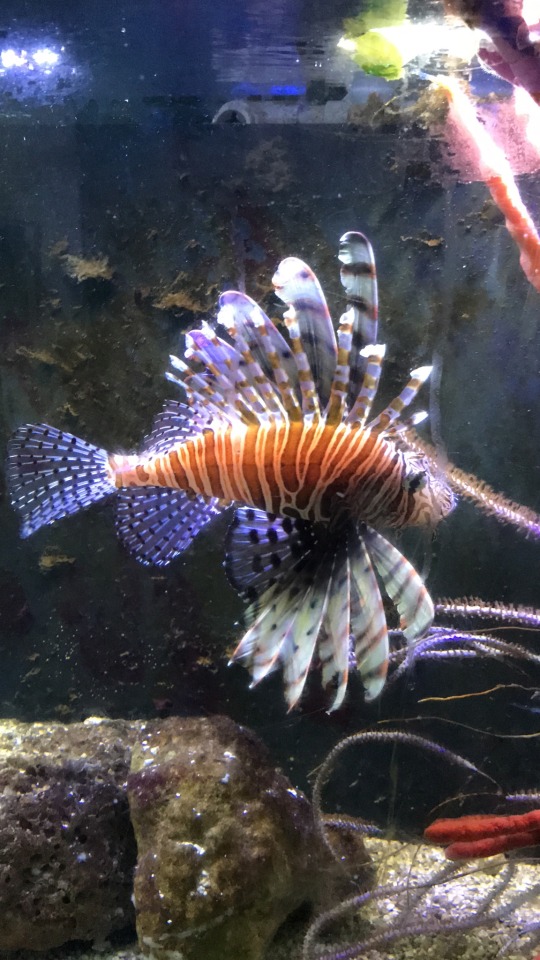
Lion Fish at Gulf Marine Labs Aquarium in Panancea, FL
#lionfish#lion fish#florida#gulfmarinelab#neapolitangal#dottflorida#naplesflorida#youtuber#neapolitan#gulf marine lab aquarium
3 notes
·
View notes
Text
Marine Biology Story of the Day #9
Welcome back to the blog—hello new followers!
So what does a marine biologist actually do for work? Is it always adventure on the high seas?
Well, it’s not always adventure on the high seas—you see, science isn’t exactly super well funded these days, and you need money to do that kind of stuff, AND that money usually comes from shareholders that want you to research things that may be beneficial to them. In addition, as a biologist, you have to spend long periods of time on shore in your office and lab, analyzing data and writing peer reviewed journals in the hopes that they’ll be published. That’s the price you pay for the cool fun times.
So what do I actually do for a living?
Welp, a big chunk of my research is working as a shrimp disease researcher and a shrimp ecologist.
Really, Jillian? You say, What about the sharks? What about the deep sea?
Well, here’s the thing—big charismatic animals are cool and all, but my tumblr handle is teenyfish, and that is because what I like to research are the tiny animals that are much lower on the food chain. Why? Because in many ways, they are the most important, and the most diagnostic when it comes to determining the health of an ecosystem.
How’d I get into shrimp disease?
Well, I used to work for the Virginia Institute of Marine Science Trawl Survey.
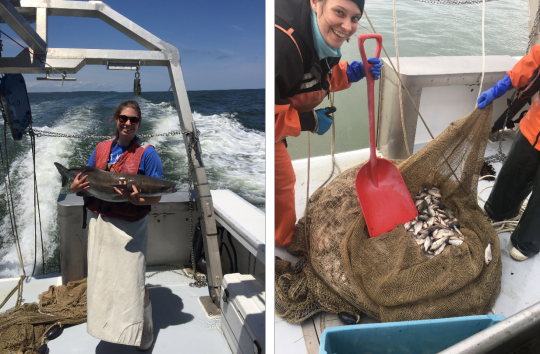
Basically, we went out on the Chesapeake Bay and would catch all species of fish to determine how fish populations were doing in the Bay from year to year. I began noticing that all the penaeid shrimp we caught began showing signs of blackened gills.

(gradient of black gill infection on left, close up of black gills on right)
I informed one of our P.I.’s (principal investigators) and our Black Gill Disease survey was born.
What is Black Gill Disease? Well, the blackened gills are actually an immune response that a variety of marine invertebrates (crabs, shrimp, lobsters) have in response to foreign invaders (bacteria, viral disease, parasites). In penaeid shrimp (aka the shrimp we like to eat—think bubba gump shrimp), its caused by Hyalophysa lynni, a parasitic ciliate that embeds itself into the gills of the shrimp. Ciliates are microscopic single celled organisms that propel themselves around with little “hairs”

(H. lynni, picture from Frischer et al. 2019)
Once the ciliate bites down on those shrimp gills, the shrimp release melanin that surround the ciliate and begin releasing chemicals that break it down. Unfortunately though, the chemicals also cause tissue death in the surrounding gill tissues, so they start not being able to breath as well. It’s kind of like when you get the flu (or COVID-19—lets be topical) and your body responds by giving you a fever that makes you super duper weak. Gets rid of the problem, but you feel like shit.
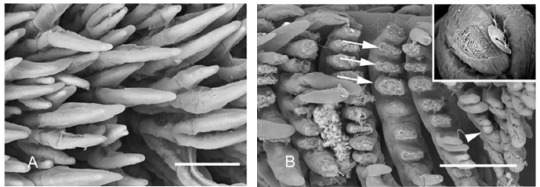
(closeup of healthy shrimp gills (A) vs. black gill damaged shrimp gills (B), from Landers et al. 2020)
So, this means the shrimp are weaker, slower, and about 2-3x more susceptible to predation. Which means THEY IN DANGER GIRRRLLL.
This disease was first “discovered” in Georgia and North Carolina in the late 90’s, so it’s actually relative new and completely understudied. Which means once I jumped on this project my career ABSOLUTELY BLEW UP (in a good way).
I got a job as a biologist with Texas Parks and Wildlife’s Coastal Fisheries Division about two years ago, mostly because of the shrimp disease research I was doing in Virginia. Since moving down to Texas, I’ve been in charge of two major shrimp disease monitoring projects across the entire Texas gulf coast (It takes 8 hours to drive the full length from Louisiana to Mexico). We go out and collect samples from 7 major bays in Texas (Sabine Lake, Galveston Bay, East and West Matagorda Bay, Corpus Christi Bay, and Upper and Lower Laguna Madre)
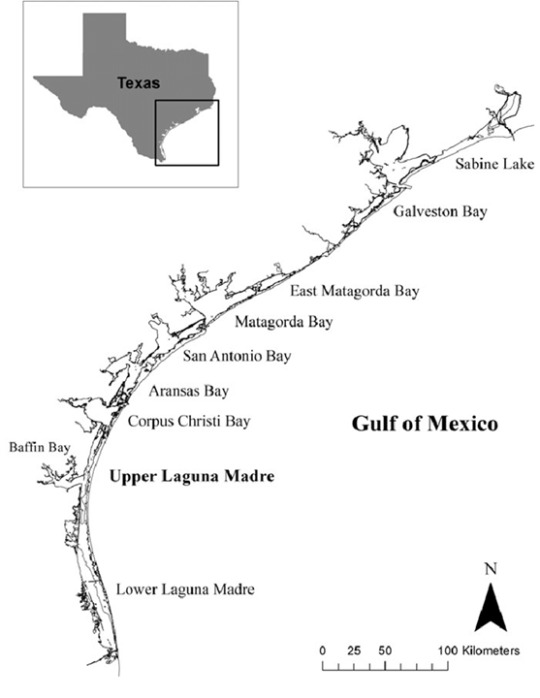
I rely pretty heavily on our fisheries techs to collect samples for me since our coast is so expansive, but I do go out often on our local bay with my husband (he works at another local TPWD lab).
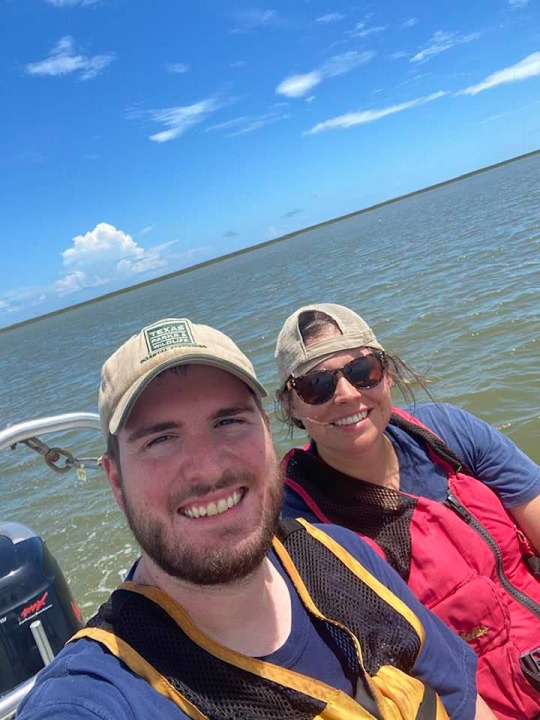
Once we get shrimp, I isolate DNA from shrimp gill tissue, and then I use a really cool DNA fragment tissue sequencing method to see if the shrimp have H. lynni DNA or not. DNA sequencing is just a matter of using DNA primers to go in and select a certain part of the ciliate genome that is unique and differentiated from shrimp DNA. DNA is just a sequence of proteins--adenine (A), thymine (T), guanine (G) and cytosine (C), and each species of animal/plant/bacteria have parts of their genome that have a unique ATGC pattern—that’s how we can differentiate species!
Once I know which shrimp are positive for black gill, we can determine if temperature, salinity, dissolved oxygen, location, or time of year have an effect on how much black gill we see in shrimp populations coast wide.
Now, I got asked to be on TPWD’s PBS show—so here’s a small segment to kind of streamline what I do. Watch me be awkward on television.
youtube
I’m just going to point out, I do not do lab work CSI style, in the dark.
So in addition to black gill, I’m beginning to look at other common shrimp diseases too (like the aforementioned White Spot Disease in the video). Because of this, I got to go to a shrimp disease pathology course at the University of Arizona. Why is a marine disease lab in Arizona you ask? Because Arizona is not near any body of water, so they do not risk contamination. Also, they tell me the Arizona sun is pretty good at disinfecting aquarium equipment. I got to learn new DNA sequencing methods and dip my toe into histology, which is basically sectioning shrimp samples and dying organs so you can see what is going on with an organism’s body.
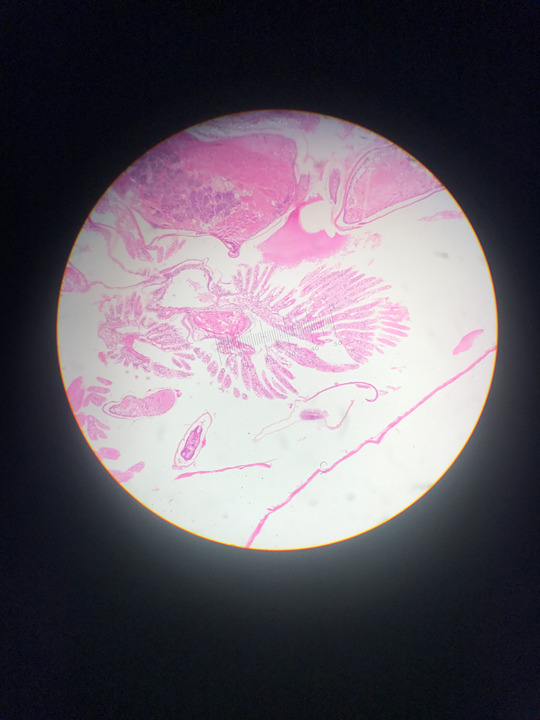
(cross section of a healthy shrimp gill)
Because of this, my TPWD coworkers and I are hopefully going to hop onto a big disease study with the University of Arizona and South Carolina’s Department of Natural Resources—but we are still waiting to hear back from the USDA to see if our study is going to be funded. Fingers crossed.
In addition to the University of Arizona study, I’m working with Texas SeaGrant and commercial shrimpers to collect more samples in the Gulf of Mexico (think WAAAAAYYYY offshore, 70-100 miles offshore). This is where all the big adult shrimp are, and I want to collect samples to see if adult shrimp are passing the disease to their offspring as their babies move inshore. And from the looks of it, the adults have it to.

(one of my boat captains, who is out on the Gulf right now, sent me this picture. Note the dark gills)
I’m sure I’ll have some more information for you all in the future as my studies progress, but for now, I’ll leave you with this: The Texas Gulf Coast shrimp populations are infected with H. lynni—and at some of the highest levels in the country. In the summer, upwards of 80% of shrimp can be infected in coastal Texas regions. In addition, low salinity and high temperatures tend to increase disease prevalence as well, and this might be tied to climate change and warming waters, as well as salinity changes due to increased precipitation (due to climate change) and the rerouting of river flow.

(percentage of black gill positive shrimp across the Texas gulf coast from 2019--from a WIP manuscript of mine)
Thanks for reading ya’ll, and as always, PLEASE do not hesitate to ask questions about my research.
#marine biology#marine biologist#marine biology story of the day#ocean stories#ocean biology#shrimp biology#disease pathology#shrimp disease pathology#parasite biology#real science#texas gulf coast#texas biology#gulf of mexico#penaeid shrimp#shrimp
89 notes
·
View notes
Text
Fwd: Graduate position: TexasAMU_CorpusChristi.CetaceanReproBiol
Begin forwarded message: > From: [email protected] > Subject: Graduate position: TexasAMU_CorpusChristi.CetaceanReproBiol > Date: 4 November 2020 at 07:48:02 GMT > To: [email protected] > > > > The Functional Anatomy and Behavioral Ecology of Marine Mammals > (FABEMM!) lab at Texas A&M University- Corpus Christi seeks a PhD > student to use innovative techniques to explore the biomechanics of > genital and sperm interactions in cetaceans. The P.I., Dr. Dara Orbach, > is a leader in the functional anatomy of marine mammal genitalia. More > information about the FABEMM! Labขs research interests can be found > at https://ift.tt/388h0in. The selected student will be based in > Corpus Christi, Texas, with frequent travel to collaborating institutions, > particularly throughout Florida. The student will work in aquariums and > laboratory settings with live and post-mortem marine mammals and will also > have opportunities to mentor interns and engage in boat-based research. > > Applicants should: 1) be highly driven, intellectually curious, > detail-oriented, willing to learn, and team-oriented, 2) > have a MS or DVM degree (completed by May 2021), and 3) have > evidence of research productivity (e.g., papers, presentations, > grants). Students with a research background in histology, > immunohistochemistry, biomechanics, sperm biology, OR functional > anatomy are particularly encouraged to apply. Applicants must meet > the minimum requirements for admission to the Marine Biology Program > (https://ift.tt/2TTRZ1U). > Interested applicants should contact Dr. Dara Orbach > ([email protected]) and include: 1) a cover letter describing > your research interests, how they relate to the research project, > and your relevant qualifications, 2) a cv with reference contacts > listed, 3) an unofficial transcript(s), and 4) a sample of your writing > (e.g. publications, thesis). All applications received before December > 10th, 2020 will receive first consideration, and the position will remain > open until filled. The required start date is no later than Fall 2021, > with a preferred start in Summer 2021. > > Texas A&M University- Corpus Christi, also known as The Island > University, is the only university in the USA located on its own > island. As a Minority Serving Institution, cultural diversity and an > inclusive atmosphere are core values. Located is South Texas on the Gulf > of Mexico and less than 3 hours from the Mexican border, Corpus Christi > boasts a semi-tropical climate, a thriving industrial sector, rich marine > biodiversity, and a low cost of living. The Department of Life Sciences > is one of the largest and most productive departments at TAMU-CC, with > research specializations in marine biology and biomedical sciences. The > Department of Life Sciences relocated to a brand new state-of-the-art > building last year a few feet from the ocean, where free-ranging dolphins > can regularly be observed. Facilities include an automated histology > laboratory, 2 additional dedicated laboratories for the FABEMM! lab, > and all new equipment. The MARB program offers students experience in > data collection, grant writing, and statistical analysis, in addition > to annual travel funding and several prospective fellowships. Stipends > are competitive. > > Dara Orbach, PhD > > Assistant Professor of Marine Biology > Department of Life Sciences > Texas A&M University- Corpus Christi > > [email protected] > > > "Orbach, Dara" >
via IFTTT
0 notes
Photo
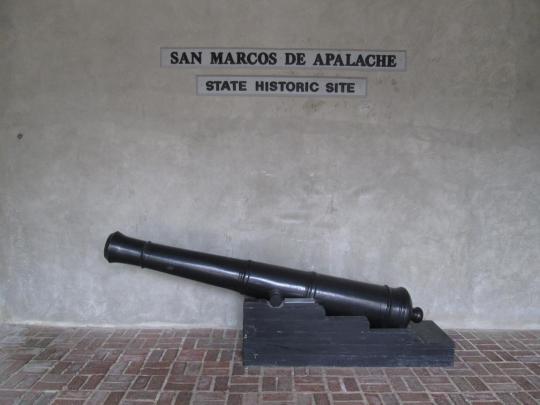

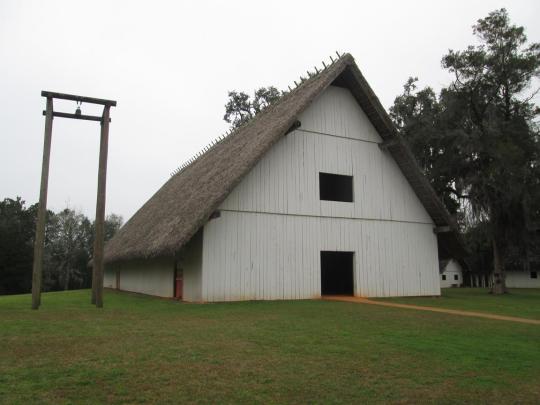
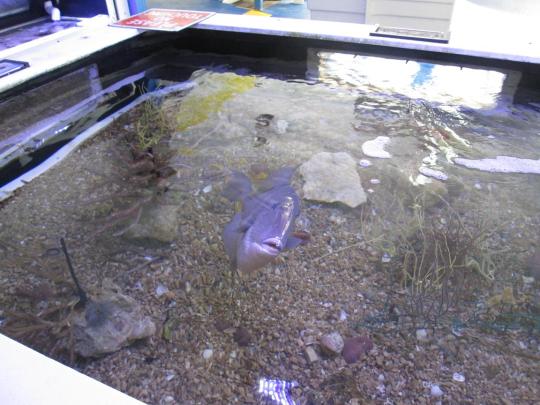



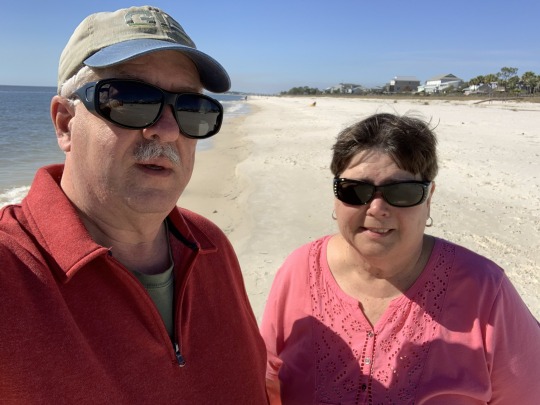
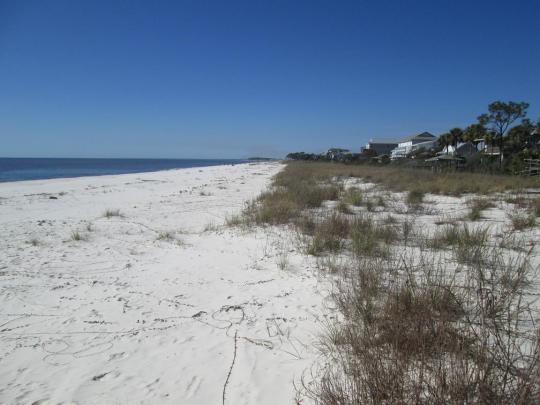
We have been in tourist mode for a couple of days. Sunday, we went to San Marcos De Apalache State Park, which was a fort going back to the days of Ponce De Leon. Then we went to Mission San Luis in Tallahassee. The theme of both sites was Europeans interfering with Native American culture.
Today, we went to the Gulf Specimen Marine Lab, which is a small town aquarium with big town aspirations.
0 notes
Text
Some Adorable Places To Visit In Alabama
Alabama is the most beautiful place ofUnited States and this state is regarded as the most popular tourist spot for all the visitors. This place is very much famous for its natural attractions, and historical facts. This state's economy is based on some aspects which includes aerospace, manufacturing, healthcare, education, and technology. Whenever, you will plan a vacation in Alabama, then please make a visit all these beautiful Attractions In Alabama which are given below:
1) Oak Mountain State Park : It is a public recreation area which is located at the Birmingham city of Alabama. It is state's largest state park which includes a wildlife center, Oak Mountain Interpretive center, and a BMX track. This park also offers many activities which includes swimming, hiking, boating, and horseback riding. They also offer many facilities which are specially designed for the entire families such as rental facilities, campsites, and golf courses as well.
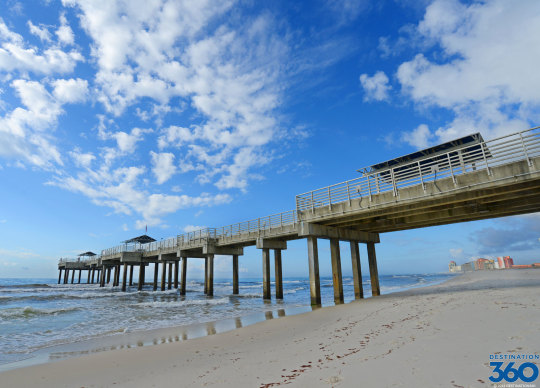
2) Legacy Museum : This museum mainly represents the history of slavery and racism in America. This memorial is also referred as the historical site which includes many photographs, documentaries, and many other interactive exhibits. It also organizes many educational trips and tours for the school and college students. With the help of these programs, every person can get the knowledge of historical facts ofUnited States.
3) Dauphin Island Sea Lab Estuarium : It is a public aquarium which mainly highlights the coastal Alabama which includes many parts which only represents the marine culture and traditions. These places also offers many activities for all the visitors which includes boating, kayaking, water sport activities and other tournaments. In Estuarium, you can also take a view of plants, animals and other natural resources.
4) Orange Beach Welcome Center : It is regarded as the center of attraction for all the visitors. They provide all the information of Alabama Gulf Coast to all the visitors with the help of brochures and local maps. Orange beach also offers many beach activities for all the Travellers. It is considered as the most relaxation spot for the vacations.
If you wanted to get any another informations related to these attractions then please visit the website visitingmontgomery.com. In this website, you will get all the information of different Places To Visit In Alabama. If you have any doubt then please contact them. With the help of this website, you will definitely get the best vacation destination with its proper facilities.
0 notes
Photo

New Post has been published on https://vacationsoup.com/10-things-to-do-with-kids-in-venice-florida/
10 Things to do with Kids in Venice Florida
10 Things to do with Kids in Venice Florida
Venice, the City on the Gulf, is the perfect place for a vacation with the whole family.
You are looking for ideas what to do with kids? Let me present 10 great ideas for kid’s activities in and around Venice Florida:
1. Looking for Shark Teeth
Who finds the most? Who find the largest one? Kids and adults alike love looking for Shark Teeth. All beaches around Venice are wonderful for the search for the fossil shark teeth. However, the greatest success in finding them you will have at our private beach, which you can reach with our South Venice Beach Ferry. The only visitors of this piece of paradise come with the ferry, so this beach is never overcrowded. Bring our “Shark Tooth Sifter Tool” and we guarantee you will find them – Fossil Shark Teeth of Venice!
Learn more about Fossil Shark Teeth Here
2. Children's Fountain in Venice
All kids love this water attraction. Be prepared – they could spend hours! The interactive fountain is located on 200 W. Venice Ave in Centennial Park near the Gazebo.
Please visit the Venice site for more info.
3. Mote - Marine Laboratory + Aquarium in Sarasota
Explore the secrets of the sea through touch pools, viewable-working labs and high-tech interactive exhibits that showcase the world-renowned research of Mote Marine Laboratory. See sharks, manatees and sea turtles, along with more than 100 other species of marine life. Especially families love interactive, hands-on eco-adventures on the Sea Life Encounter Cruise.
Please visit their website mote.org.
4. Big Cat Habitat and Gulf Coast Sanctuary in Sarasota
This large-animal rescue is located in eastern Sarasota County. Founded in 1987 by Kay Rosaire, the nonprofit sanctuary is a permanent home for dozens of exotic animals, offers placement for animals in need, and works to educate the public about animal care and conservation.
Please visit their website for more info.
5. Kayak Rental at the Jetty
Kayak or PaddleBoard to Snake Island, around Cactus Island and Bird Island. Take some time to pick shells or look for sharks teeth on one of the islands. Pack a lunch and explore some of the waterfront parks and water only access parks in Lyons Bay, Dona Bay, and Roberts Bay. Or head out the inlet to the beach! The launch site is located in a Manatee Zone so you may see dolphin, manatee and a variety of fish and birds.
Personal flotation devices come in sizes from toddler to adult.
More info on their website or find them on faceebook under venicejettyrentals.
6. Dakin Dairy Farm in Myakka City
Country life is displayed at the "Dakin Dairy Farm" in Myakka City. On a guided tour through the dairy farm, visitors can learn where milk comes from. Children can breathe fresh country air, caressing little piglets and play in the hay.
For directions and opening hours, please see their website dakindairyfarms,com.
7. Airboat Ride and Gator Watch
Enjoy a real authentic Florida airboat ride! Located on the beautiful Peace River in Arcadia, Florida, they offer Peace River Airboat Tours, Private Charters and Swamp Buggy rides to the public.
Please see their website peacerivercharters.com for more info.
8. Treeumph Bradenton - Playtime in the trees
They got over 10 football fields of challenging terrain and hundreds of aerial adventure games. Plus, thousands of smiling faces both young & young at heart . Fly through a dense forest from tree to tree on crazy-fun obstacles that defy gravity. Get in sync with nature. Love every single moment spent with your friends and family as you experience one of the most unique attractions in Florida. Rise Above!
Learn more about them on treeumph.com.
9. Sarasota Jungle Gardens
Jungle Gardens is a small zoological animal park in Sarasota on the west coast of Florida. The small zoo is nestled in a beautifully designed tropical garden with dense vegetation. Already since 1939, the Jungle Gardens with the quiet and relaxed atmosphere is the ideal destination for families with young children. You will not find great attractions or rides.
Alligators, snakes, parrots and macaws, monkeys and some exotic birds can be admired from the park visitors. Highlight, especially for the children,is the Flamingo enclosure where you can feed the proud animals out of hand.
Three 20-minute shows are offered daily, in which you can learn more about the animals (wild birds, parrots and alligators).
For more info please see sarasotajunglegardens.com.
10. Indoor Fun - Skyzone
Bounce, Play and Climb Challenge
Whether it’s a birthday party, an afternoon pickup game of Ultimate Dodgeball, a charity event, or just a day out with the family, Sky Zone is a place to gather with friends, family, and your community. We provide ways for people to play together, as well as spaces for parents and non-jumpers to enjoy themselves while keeping an eye on the action.
More info on skyzone.com/Sarasota
0 notes
Text
“Could you explain the oceanography part of your bio? As an aspiring marine scientist with a passion for games, I'm interested in hearing about your background.”
I always loved science as a kid. In college I decided I wanted to be an oceanographer, and majored in biology. I also picked up a major in philosophy, because biology at the undergraduate level is mostly memorization, and the philosophy at least allowed me to think. I also did internships at the National Aquarium in Baltimore and spent a summer at the University of Maryland’s Horn Point lab.
I was accepted to a few graduate programs, but ultimately went with the one from the University of Texas at Austin. I grew up in Texas (I was an army brat, so I grew up in a lot of places, but Texas had made the best impression). I had also spent some time at the sleepy beach town of Port Aransas, which is the where UT’s marine lab is still located. I hit it off with the professor who eventually became my adviser and found his research on crustaceans fascinating. UT also offered the best package of financial assistance and I was determined not to get buried under student loans.
I spent a year in Austin doing some of the base graduate level classes (evolution, statistics, molecular biology) and then moved to Port Aransas where I lived for 5 additional years. My area of study was benthic ecology, which means things that live on the ocean floor (and is the opposite of pelagic, which means stuff that live in the water like plankton, jellyfish and many fish). Benthic ecology involves some fish, but is mostly invertebrates. I love invertebrates. In the marine ecosystem, it means you are looking a lot at worms, clams and crustaceans. At my peak, I estimate I knew the scientific name of about 3000 species of Gulf of Mexico invertebrates.
My dissertation was called something like “Genetic diversity in harpacticoid copepods exposed to chronic contamination at offshore oil and gas wells.” This was the era where PCR allowed DNA sequencing using very small tissue samples, which was revolutionary for the time. Prior to that, you had to gather huge tissue samples, which made it hard to work on individual small organisms. Oil and gas is of course of major importance to the Texas economy. Despite the occasional news report of a wrecked tanker or oil well blow out, overall the petrochemical industry has a pretty good record of not dumping their product all over the ocean. (That would after all, be giving up the very product they are collecting.) But chronic exposure is another story. Low levels of hydrocarbons and heavy metals such as lead and cadmium can contaminate the sediment around oil wells, and while they won’t kill many animals outright, they can cause smaller, long term effects.
If all of that is too technical, I’ll just say that graduate school was hard and stressful but a lot of fun. I spent a lot of time on boats, including several overnight trips on research cruises (and do not think of cruise-ship comfort when I use the term “cruise”). I spent a lot of time on the beach, or estuaries, or salt marshes, all of which are beautiful environments. I had a pet tank stocked with mantis shrimp and octopus. I saw sharks and whales and manatees and sea turtles. I went fishing a lot. I was quite broke (most scientists are) but I got to meet a lot of really smart people from around the world. I got to teach the occasional course to undergraduates, and I always loved it. I’d still teach today if I had the time. When I retire, I will probably go back to teaching.
When I finished my Ph.D. I was offered a research position at the University of South Carolina, which also has a storied marine science program. This was not a tenure-track position (the holy grail for academia and just as rare) but it was a good job and almost doubled my pay. I ran the lab of a professor who had been promoted to dean. I think I published 5-6 papers, which isn’t bad for the few years I was in science. I still got out in the field some, but less, and I spent a lot of time writing grant proposals and typing up results. Scrounging for research funds even then was challenging, and I can only imagine how much worse it has gotten, and how much harder it is about to get for poor scientists in the USA. You can make decent money in medical research or working for a company, but being a scientist even at a major research university doesn’t pay nearly what it should given the high degree of technical expertise it requires and the ultimate benefit it can provide to society. But anyway.
The thing that ultimately convinced me that I was in the wrong career was that so many of my colleagues would go home, have dinner, and then go back to the lab to work on their experiments. I wanted to play games after dinner. Science is a career where the rewards are largely limited to your own personal passion for the work. I realized I didn’t have the passion that my coworkers had, and it wasn’t fair to them or the industry to keep doing something that I didn’t love. So I switched careers. And never looked back. While I still would rather play games than go back to work after dinner, I am confident in saying that I do love my career now. I still love the ocean too. For me, it makes a better hobby than a career.
3/29/2017
14 notes
·
View notes
Photo
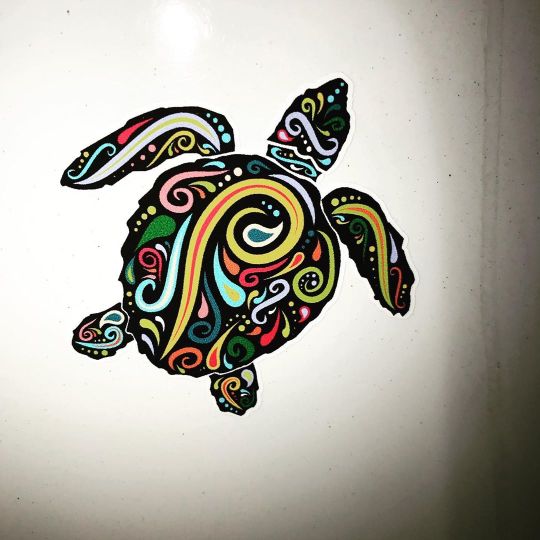
Come check out my new video filmed at the @GulfMarineLabs in Panacea, FL #GulfMarineLab #fish #turtles #marinelife #Aquarium # lionfish #sharks #nursesharks #gulfmarinelife (at Gulf Specimen Marine Lab) https://www.instagram.com/p/B4_XkODnm7v/?igshid=ufz1m2fikfqj
0 notes
Text
15 Sarasota Museums and Tourist Attractions You’ll Love
Florida is famous for its theme parks but there’s lots more to do in this photogenic region. For example, there are some fantastic Sarasota museums that you really shouldn’t miss. It’s no surprise that the county is known as Florida’s Cultural Coast®. We’ve rounded up our favourite tourist attractions in Sarasota County for young and old.
Sarasota Museums
The Ringling
The Ringling is the State Art Museum of Florida and an exceptional cultural and educational centre. It’s the legacy of John and Mable Ringling and located within the 66 acre grounds of their Winter estate. John Ringling was the founder of the Ringling Bros. circus and later became the co-owner of the Barnum & Bailey Circus. The Ringling has an interactive Circus Museum and the miniature 44,000 piece Howard Bros. circus model. There’s also a pink Renaissance style Museum of Art, commissioned by John Ringling. It has an impressive collection of European paintings and Asian art, as well as temporary outdoor sculptures by artists such as Ai Wei Wei.
Visitors should not miss Ca’ d’ Zan, the former home of John and Mable Ringling. The name means House of John in the Venetian dialect and the decor was inspired by their frequent trips to Italy. Next to it, you’ll find Mable Ringling’s pride and joy, her Rose Garden. It’s the oldest rose garden in continual use in Florida and dates from 1913.
The Ringling has many other treasures including the 18th century Asolo Theater from Italy and the new Kotler-Coville Glass Pavilion.
Opening hours: 10 am to 5 pm daily, until 8 pm on Thursdays. Closed on Thanksgiving, Christmas Day and New Year’s Day
5401 Bay Shore Rd., Sarasota, FL 34243
Sarasota Classic Car Museum
There’s a wonderful selection of cars at the Sarasota Classic Car Museum, representing 100 years of automobile history. It’s the second oldest continually operating antique car museum in the United States. The collection features well known cars belonging to stars including John Lennon’s 1965 Mercedes Benz and Paul McCartney’s Mini Cooper. You can also see the Rolls Royce cars that belonged to John and Mable Ringling as well as many rotating exhibits.
Opening hours: 9 am to 6 pm, Monday to Sunday. Closed on Christmas Day.
5500 N. Tamiami Trail, Sarasota, FL 34243
Art Center Sarasota
With four galleries, Art Center Sarasota provides creative opportunities to the whole community. They run youth programs including Creative Kids Saturday Classes and the Creative Kids Summer Art Camp. The exhibitions focus on local and regional art, showcasing many emerging and established talents.
Opening hours: 10 am to 4 pm, Monday to Saturday
707 N. Tamiami Trail, Sarasota, FL
Mote Marine Laboratory & Aquarium
This iconic Sarasota museum plays an important role in wildlife conservation. Mote Marine has helped to rehabilitate many injured sea creatures such as manatees and turtles. In fact, they hold regular turtle spotting walks at a nearby beach in season. The Washed Ashore art exhibit features sharks and turtles made from plastic and other debris, in order to educate visitors on how to keep rubbish out of the ocean.
Mote scientists are leading 25 research programs including finding new ways to restore coral reefs. They’re also training local diver and snorkeler volunteers as part of their BleachWatch program to detect bleaching on coral, an early warning sign of damage.
There are over 100 species of fish and marine animals at Mote, as well as a 135,000 gallon shark habitat. Visitors can see inside some of the working labs such as the Seahorse Conservation Laboratory, through glass walls. Staff and volunteers are also on hand to answer your questions.
Opening hours: 10 am to 5 pm daily
1600 Ken Thompson Pkwy, Sarasota, FL 34236
Crowley Museum & Nature Center
A great place to discover more about pioneer history, Crowley Museum & Nature Center is fun for all the family. There’s a half-mile boardwalk which leads visitors through 5 different Florida habitats and a two story observation tower overlooking the Myakka river. The Children’s Discovery Path has five interactive stations with fun activities to get involved in. The museum itself houses some interesting pioneer artefacts and there’s also a sugar cane mill and a birding trail.
Opening hours: 10 am to 5 pm in fair weather, from Saturday to Sunday
9192, 16405 Myakka Rd, Sarasota, FL 34240
Historic Spanish Point
Spread over 30 acres, Historic Spanish Point is a fascinating insight into Floridian pre-history. Its one of the largest intact archaeological sites on the Gulf Coast from the prehistoric period. The Window to the Past exhibition is the only place in the United States where you can go inside a prehistoric shell midden or mound.
There’s also one of the largest butterfly gardens in Florida and many different natural habitats, with over 50% of the county’s native plants being represented here. Chicago socialite Bertha Palmer established a homestead here in 1910 and you can visit three of her gardens.
Opening hours: 9 am to 5 pm, Monday to Saturday and 12 – 5 pm on Sundays
337 N Tamiami Trail, Osprey, FL 34229
Save our Seabirds
Housing over 120 birds in their 3 acre site, Save our Seabirds aims to rehabilitate injured birds and to educate the public on how to minimize environmental risks to them. Their Birdwalk shows visitors how each species has adapted to its natural environment, and the Wild Bird Learning Center has some interesting educational displays.
Opening hours: 10 am to 5 pm daily
1708 Ken Thompson Pkwy, Sarasota, FL 34236
Marietta Museum of Art & Whimsy
This colourful museum features quirky paintings and sculptures galore, as well as a tranquil garden. The Marietta Museum of Art & Whimsy is the passion project of local artist Marietta Lee. Some of her works are exhibited here as well as those of many other unique artists. What makes this place so special is the warm welcome that the volunteers give to visitors. They’ll provide you with as much or as little information as you want on the artworks.
Marietta herself is often at the museum to lend a hand. Even the restrooms here are works of art. There’s no café or gift shop but there is a kitchen manned by volunteers which gives you complimentary cookies and soft drinks. As entrance to the museum is free, donations are greatly appreciated.
Opening hours: 1 – 4 pm Thursdays to Saturdays and from November to May
2121 N. Tamiami Trail, Sarasota, FL 34234
The Ringling College of Art + Design
With over 50 exhibitions each year, all of which are free, the Ringling College of Art + Design is a key fixture on the Sarasota arts scene. Since opening more than 85 years ago, it’s helped students to develop their creative skills. These days its renowned for its computer animation programs.
Opening hours: 10 am to 4 pm, Monday to Friday
2700 N. Tamiami Trail, Sarasota, FL 34234
Venice Museum & Archives
Housed in Triangle Inn which dates from 1927 the Venice Museum & Archives has a vast collection of over 30,000 objects and photographs. There are some interesting exhibits including a giant Megalodon shark and one on auto racing in Venice from 1953 to 1960.
Opening hours: 10 am to 4 pm from Monday to Wednesday, and 11 am to 3 pm on the 1st and 3rd Saturday from October to April
351 Nassau St S, Venice, FL 34285
Sarasota Tourist Attractions
The Children’s Garden
One of the most popular things to do in Sarasota with kids is to visit The Children’s Garden. There are fun storybook readings and many other activities like weekly art and gardening classes. A maze, pirate ship, secret garden, tree fort and three little pigs’ house are just some of the attractions.
Opening hours: 10 am to 5 pm daily
1670 10th Way, Sarasota, FL 34236
Unconditional Surrender
This huge statue by Seward Johnson commemorates the end of the Second World War and is said to be inspired by a photograph by Victor Jorgensen. The original bronze statue was created in 2005 with the help of computer technology and damaged by a car in 2012. It was replaced by the current statue in 2013.
Island Park Drive, Sarasota, FL 34236
Marie Selby Botanical Gardens
With a magnificent setting on the shores of Sarasota Bay, Marie Selby Botanical Gardens is one of the most popular Sarasota attractions. Voted among the top places to visit in Sarasota by TripAdvisor, it’s the only botanical garden in the world specialized in the study and display of epiphytes. If you’re wondering what epiphytes are, they’re plants that grow on other plants. Orchids, moss and many ferns are some of the best known examples. There’s a charming tea room and a gift shop as well as 15 acres of exotic flowers and plants to admire.
The children’s rainforest garden has a rope bridge, outdoor musical instruments and play area. The museum itself has some interesting temporary exhibitions, including Warhol: Flowers in the Factory, celebrating the role of nature in Andy Warhol’s art.
Opening hours: 10 am to 5 pm daily. Closed on Christmas Day
900 S. Palm Ave, Sarasota, FL 34236
Sarasota Jungle Gardens
Feeding flamingos by hand and talking to the resident parrots are just two of the fun things to do at Sarasota Jungle Gardens. There’s an interesting shell museum, a gift shop and café in their 10 acre grounds.
Opening hours: 10 am to 5 pm daily. Closed on Thanksgiving and Christmas Day
3701 Bay Shore Rd., Sarasota, FL 34234
Saraosota Opera
Sarasota Opera one of the foremost opera companies in the United States, celebrating its 58th season. The building dates from the 1920s and was formerly the Edwards Theatre, once playing host to Elvis Presley. It’s since been extensively renovated and is open to the public for tours – a fascinating behind the scenes experience.
Tour opening hours: Mondays when the opera is in season, at 10.30 am
61 N Pineapple Ave, Sarasota, FL 34236
In addition to visiting these amazing Sarasota museums and tourist attractions, take time to explore the other sights in this great Florida county. There are some incredible Sarasota beaches – one of them was even voted best beach in the USA by TripAdvisor and Dr Beach. You’ll also want to check out the wide range of Sarasota restaurants, from farm to table to gourmet dining. Fans of culture will love the art galleries on Palm Avenue in downtown Sarasota, while antique lovers will enjoy the colourful Burns Court area. You may find our guide to other Sarasota attractions helpful.
Pin for later or share with friends if you’ve found this useful
In association with Visit Florida and Visit Sarasota
The post 15 Sarasota Museums and Tourist Attractions You’ll Love appeared first on Luxury Columnist.
15 Sarasota Museums and Tourist Attractions You’ll Love published first on http://bogouzunshang.tumblr.com/
0 notes
Photo
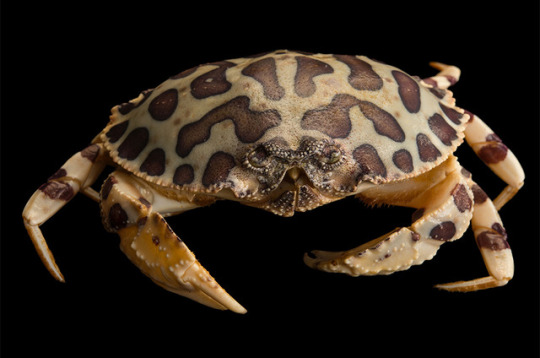
Granchio calico (Hepatus epheliticus)
Gulf Specimen Marine Lab and Aquarium
Fotografia di Joel Sartore, National Geographic Photo Ark
1 note
·
View note
Video
youtube
Tiny trackers reveal the secret lives of young sea turtles
SARAH ZIELINSKI
DECEMBER 22, 2017
Young loggerhead turtles from Brazil can end up in very different places in the Atlantic depending on when they hatch, a study of tagged turtles has found.
Not so long ago, the lives of sea turtles were largely a mystery. From the time that hatchlings left the beaches where they were born to waddle into the ocean until females returned to lay their eggs, no one really knew where the turtles went or what they did.
Then researchers started attaching satellite trackers to young turtles. And that’s when scientists discovered that the turtles aren’t just passive ocean drifters; they actively swim at least some of the time.
Now scientists have used tracking technology to get some clues about where South Atlantic loggerhead turtles go. And it turns out that those turtles are traveling to some unexpected places.
Katherine Mansfield, a marine scientist and turtle biologist at the University of Central Florida in Orlando, and colleagues put 19 solar-powered satellite tags on young (less than a year old), lab-reared loggerhead sea turtles. The turtles were then let loose into the ocean off the coast of Brazil at various times during the hatching season, between November 2011 and April 2012.
The tags get applied to the turtles in several steps. Turtle shells are made of keratin, like your fingernails, and this flakes off and changes shape as a turtle grows. Mansfield’s team had figured out, thanks to a handy tip from a manicurist, that a base layer of manicure acrylic deals with the flaking. And then some strips of neoprene along with aquarium silicone attach the tag to the shell. With all that prep, the tag can stay on for months. The tags transmit while a turtle is at the water’s surface. A loss of the signal indicates that either the tag has fallen off and sunken into the water, “or something ate the turtle,” Mansfield says.
The trackers revealed that not all Brazilian loggerhead sea turtles stay in the South Atlantic. Turtles released in the early- to mid-hatching season stay in southern waters. But then the off-coast currents change direction, which brings later-season turtles north, across the equator. Their trajectories could take them as far as the Caribbean, the Gulf of Mexico or even farther north, which would explain genetic evidence of mixing between southern and northern loggerhead populations. And it may help to make the species, which is endangered, more resilient in the face of environmental and human threats, the researchers conclude December 6 in the Proceedings of the Royal Society B.
But, Mansfield cautions, “these are just a handful of satellite tracks for a handful of turtles off the coast of Brazil.” She and other scientists “are just starting to build a story” about what happens to these turtles out in the ocean. “There’s still so much we don’t know,” she says.
Mansfield hopes the tracking data will help researchers figure out where the young turtles can be found out in the open ocean so scientists can catch, tag and track wild turtles. And there’s a need for even tinier tags that can be attached to newly hatched turtles to see exactly where they go and how many actually survive those first vulnerable weeks and months at sea. Eventually, Mansfield would like to have enough data to make comparisons between sea turtle species.
“The more we’re tracking, the more we’re studying them, we’re starting to realize [the turtles] behave differently than we’ve historically assumed,” Mansfield says.
0 notes
Text
Event Organized by Condos in Orange Beach
Sea, Sand, & Stars Science and Nature Center:
The Sea, Sand, and Stars Science and Nature Center is situated on the grounds of Orange Beach Elementary School which includes a 5,800 Gallon Saltwater Aquarium, 1,500 Gallon Marine Life Touch Tank, 800 ft. Nature Boardwalk with outside classrooms, Planetarium, Microscope Lab, Library, and Gift Shop.
They have been made conceivable through liberal commitments from Brett-Robinson Construction, the City of Orange Beach and the Baldwin County Board of Education. Over 10 years prior the seeds were planted for a hands-on office for island school understudies to find out about the regular assets of the range. The idea soon drew the interest of several prominent business and civic leaders. With their help, the Sea, Sand, and Stars interactive facility became a reality.

The facility highlights a delightful 5,800-gallon aquarium with an expansive assortment of inlet angle and a 1,500-gallon touch tank. What's more, the office has a 38-situate planetarium with a Digitarium Alpha II Projector, an innovation utilized as a part of the best planetariums over the world permitting guests a continuous look through this astounding window into space.
Practically around the bend, a magnifying instrument research center enables students to get a more intensive take a gander at marine life. Outside, an 800-foot boardwalk prompts four vast open air gazebo classrooms where understudies find out about winged creatures, plants, creatures of land and water, reptiles, and creepy crawlies. In association with WKRG TV, there is additionally a climate station finish with measuring and observing innovation.
After its opening in November 2007, the office was a win - drawing understudies not simply from Gulf Shores and Orange Beach, but rather from the whole way across Baldwin County. Inside two months, the middle started to have understudies from over the district, including Mobile County and Escambia County in Alabama, and Escambia County Florida. Right now, the office has more than 4,000 understudies for every year.
Sea, Sand, & Stars will be opened Mon. – Thur. from 9 a.m. - 2 p.m. on the weeks of June 5, 12, 19, 26 and July 10, 17 and 24. You will appreciate this event, & your kids will love this fun thing organized by Condos in Orange Beach. Rotating schedule including guided tours and IMAX type movies in the planetarium is provided. Please make your tour reservations by calling 251-981-5690. We will start taking tour reservations May 22-25 then again starting June 5. An adult must accompany and is responsible for all children in their party under 18 years old.
For more info on events organized by Condos in Orange Beach AL for their visitors, visit our website. We are always here to help you.
#condos in orange beach#condos in orange beach al#condos for rent in orange beach al#orange beach condos
0 notes
Photo

Today I explored the Gulf Specimen Aquarium lab. It's the largest touch tank collection in the country. There were so many species of starfish and invertebrates. This starfish was hugging my fingers. ⭐️ #VisitWakulla #Ad #LoveFL #aquariumsofinstagram #visitflorida #adventureisalifestyle #familytravel #ilovefish #outdoorsydiva (at Gulf Specimen Marine Lab)
#ad#outdoorsydiva#ilovefish#lovefl#familytravel#visitwakulla#visitflorida#adventureisalifestyle#aquariumsofinstagram
0 notes
Text
Marine Science Instructor Opening (FL)
The Marine Science Station in Crystal River, Florida, a Citrus County School District educational facility, is now hiring a dedicated and passionate marine science educator. This position is ideal for those interested in teaching hands-on laboratory and field-based lessons to elementary and secondary students on land, aboard boats, and literally within habitats of coastal springs, rivers, estuaries, and the Gulf of Mexico. To learn more about the Marine Science Station, go to http://mss.citrusschools.org/. To learn more about the Citrus County School District, a State of Florida High Performing School District, go tohttp://www.citrus.k12.fl.us/.
Job Summary
This is a full-time position as the Marine Science Station Teacher at the Citrus County School District’s Marine Science Station in Crystal River, Florida. The Marine Science Station Teacher’s primary job goal is to implement experiential student learning activities in a classroom/lab setting, aboard the Marine Science Station vessels, and within the coastal waters of Citrus County and the Gulf of Mexico. The Marine Science Station Teacher provides hands-on content in marine biology, oceanography, coastal ecology, and environmental science. Other responsibilities include aquatic animal care, aquarium life support maintenance, maintenance of teaching resources, grant writing, basic vessel and field equipment maintenance, and other incidental tasks consistent with the objectives of the position.
Qualifications
Bachelor’s degree with State of Florida educational certification/eligibility in Biology (Marine Biology emphasis) or related science field.
Competence in subject matter assigned to teach, including Marine Biology, Physical Oceanography, Ecology, and Environmental Science.
Working knowledge of computer applications and educational technology.
A valid USCG Master Captain License (or willingness to obtain) and First Aid/CPR/AED certification (or willingness to obtain).
To successfully perform within this position, applicants should have the following knowledge, skills, abilities, and/or competencies:
Professionally committed; genuinely interested in child development; dynamic and engaging personality; highly developed interpersonal skills; highly developed oral and written communication skills; educational creativity; and leadership ability.
Skilled in teaching aquatic and marine science to elementary and secondary students who possess a diverse array of learning modalities.
Skilled in water-based, outdoor education and able to work in physically demanding environments.
Skilled in the proper and safe operation of vessels (i.e., power boats, canoes, kayaks) and knowledgeable of their basic maintenance.
Ability to effectively and appropriately communicate with youth and adults.
Ability to work independently as well as in professional collaborative groups.
Physical Requirements
Heavy work. Must be able to exert up to 100 pounds of force occasionally, and/or up to 50 pounds of force frequently as needed to move objects. Must be able to swim well and use snorkeling equipment. Must be able to work in adverse physical and weather conditions found in Florida throughout the year. Consistently exposed to outdoor biological and physical elements present on the Marine Science Station campus, aboard vessels, and in the water.
Terms of Employment
Salary and benefits shall be paid consistent with the District’s approved compensation plan. Base starting salary is $35,000. The length of the work year is 10 months, 196 days with the option of extra duty camp days during the summer and possibly weekends.
How to Apply
Go to http://www.citrus.k12.fl.us/
Click on “Employment”
Click on “Job Postings and Complete an Application”
Click on “Click to view current job openings”
Scroll through “All Posted Positions”
On the left side, click on the square to select the Marine Science Station Teacher position opening.
On the right side, click on “Apply for Selected Positions”
New users must create a user profile to begin the application process.
Please be sure to follow the application directions carefully.
Please be sure to attach a resume and any letters of recommendation at the end of the online application process.
If you have any questions, then please feel free to contact me either by email or phone, (352) 795-4393.
0 notes
Photo

Stress Hormones Soar in Whales Trapped by Fishing Lines
By Karen Weintraub
Dec. 4, 2017
In one more sign that North Atlantic right whales are struggling, a new study finds sky-high levels of stress in animals that have been caught in fishing nets.
Researchers determined the stress hormone levels of more than 100 North Atlantic right whales over a 15-year period by examining their feces. Sometimes guided by sniffing dogs, researchers followed the animals, collecting waste samples that they then analyzed in their lab at the New England Aquarium.
Results from the feces of 113 seemingly healthy whales helped establish a baseline of stress hormone levels, which had never before been known for the species. “We have a good idea of what normal is now,” said Rosalind Rolland, who developed the research technique and is the lead author of the study published in the journal Endangered Species Research.
She then compared these baselines to hormone levels in the feces of six whales that had become entangled in fishing lines, and one that had been stranded for several days, finding that those animals were off-the-charts anxious.
One whale, a young female named Bayla, showed stress levels eight times higher after she was found entangled in synthetic fishing ropes in January 2011. Several biologists trained in disentanglement couldn’t get all the gear off her, so they sedated the emaciated animal and gave her antibiotics. Two weeks later, an aerial survey team found her corpse floating at sea, possibly after being attacked by sharks, which typically leave healthy animals alone. A necropsy conducted a few days later found rope embedded in the back of Bayla’s throat, that possibly prevented her from eating.
“This highlights the extreme physical suffering these animals are going through when they’re entangled in fishing lines,” said Dr. Rolland, a senior scientist in the Ocean Health and Marine Stress Lab at the Anderson Cabot Center for Ocean Life at the New England Aquarium.
Because hormone levels take several hours to rise after a stressful event, Dr. Rolland said that tests on five animals that died quickly when hit by ships showed stress levels similar to those in healthy animals.
This has been a disastrous year for the North Atlantic right whale, whose population now hovers below 450. Sixteen or 17 animals have died since the beginning of the summer and only five have been born, according to Charles “Stormy” Mayo, director of the Right Whale Ecology Program at the Center for Coastal Studies in Provincetown, Mass., who was not involved in the new study.
“It used to be if we heard about one or two whales dying in a year, it was an appalling tragedy,” Dr. Mayo said.
Although once considered a species conservation success story, the population of North Atlantic right whales has been falling since about 2010, he said. “The arrow at the end of the curve is pointing at zero.”
Although the reasons for the deaths are varied, and some remain mysterious, it seems like the animals are exploring new areas in search of food, putting them in direct conflict with ships and heavy fishing lines, Dr. Rolland said.
The Gulf of Maine, which has long been central to their habitat, is one of the fastest-warming bodies of water on earth, she said.
North Atlantic right whales, which can weigh as much as the space shuttle, exclusively eat nearly microscopic creatures called zooplankton. About 80 percent of the animals carry scars from past entanglements or ship strikes.
These “urban whales” are also stressed by noise from shipping and other sources, Dr. Rolland said.
Analyzing hormones in feces — in addition to newer efforts to study the vapor exhaled from the animals’ blowholes — provides scientists an objective way to test what is stressing the whales and whether efforts to improve their habitats are working.
“If you can get a measure from the animal itself, it’s far better than us trying to interpret an animal’s behavior,” she said.
0 notes